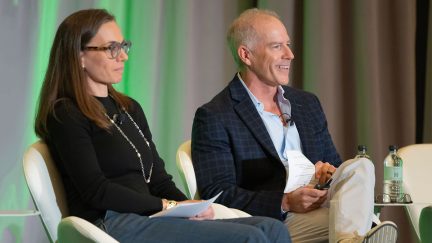For more stories like this, sign up for the PLANADVISERdash daily newsletter.
Build Referral Networks to Find the Right Clients

Retirement plan advisers can cultivate new business in a variety of ways, including cold calling and holding webinars and local events. But the most effective way to find new clients, they strongly agree, is through referrals.
“If you look at the advisory world, the opportunity to do direct outbound marketing is obviously there,” says Matthew Cellini, a partner with Greenspring Advisors. “By searching through Form 5500s, you can then target plan sponsors through emails and phone calls—but closing is much lower on outbound marketing.”
This is because many plan sponsors make decisions based on relationships with professionals in the marketplace.
“At our practice, we work with 120 companies around the U.S., and 85% of that business all came through referrals,” Cellini says.
The first thing an adviser should do before trying to cultivate referrals is to have a clear idea of the market they serve, says Vince Morris, president of Resources Investment Advisors, a OneDigital company.
“You need to have a defined target market,” Morris says. “You really want to understand what your ideal client looks like. If you are a small market retirement adviser and all of a sudden an auditor brings you a $1 billion plan, you may not have the capabilities to serve that plan.”
The next thing advisers need to understand is that developing referral sources can take years, and there is no one-size-fits-all approach, Cellini says.
“Most advisers think referral sources can be developed quickly,” he says. “In fact, the majority of our referral relationships have taken five to seven years to develop. Most advisers want to see a quick outcome, so they often stop investing in these relationships if they aren’t immediately fruitful, which negates any effort they have put in.”
The next step is knowing where to find referral sources. Cellini says they can be audit firms, certified public accountant (CPA) practices, ERISA [Employee Retirement Income Security Act] attorneys, bankers or property and casualty insurance brokers. With the OneDigital acquisition, Morris now has the benefit of being part of a company that also offers employee benefits and human resources (HR) consulting, so he seeks out referrals through these colleagues.
“We are a one-stop solution, and one-third of our relationships come in through those channels,” he says. “This holistic approach helps us retain clients longer.”
Likewise, Dan Peluse, director of Wintrust Retirement Benefits Advisors, finds referrals through the wealth advisers at his firm. However, he cautions that when working with these referrals, it is important to set realistic expectations among the clients.
“One of the challenges we see with wealth adviser relationships is that there is so much overpromising and underdelivering, be it around compensation or the service model,” Peluse says. “You need to set manageable expectations up front.”
Another source for referrals is recordkeepers, says Mike Volo, senior partner at Cammack Retirement Group. He says it is important to establish one’s practice as a thought leader in order to impress and motivate these referral sources. He explains that Cammack Retirement Group issues a newsletter called “Retirement Connection,” that’s specifically designed for the practice’s referral sources, or what it calls “centers of influence.” In it, the firm showcases its thought leadership on pressing issues, summarizes articles or passages where the firm has been quoted in the press and notes upcoming conferences its advisers plan to attend.
You Might Also Like:

Rethinking Opportunities for RIA Growth

Advisers Step Up as Clients Face Market Uncertainty
